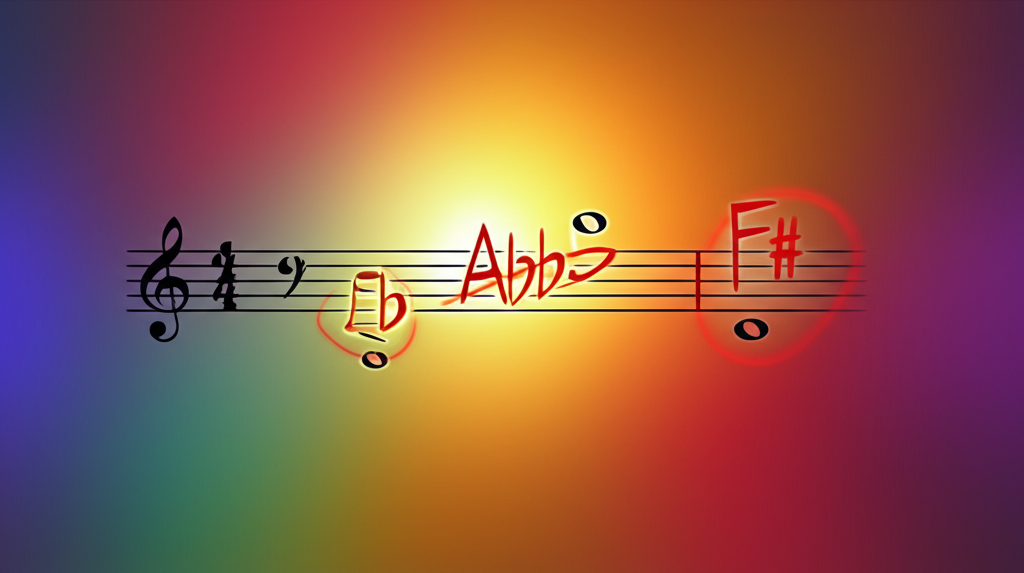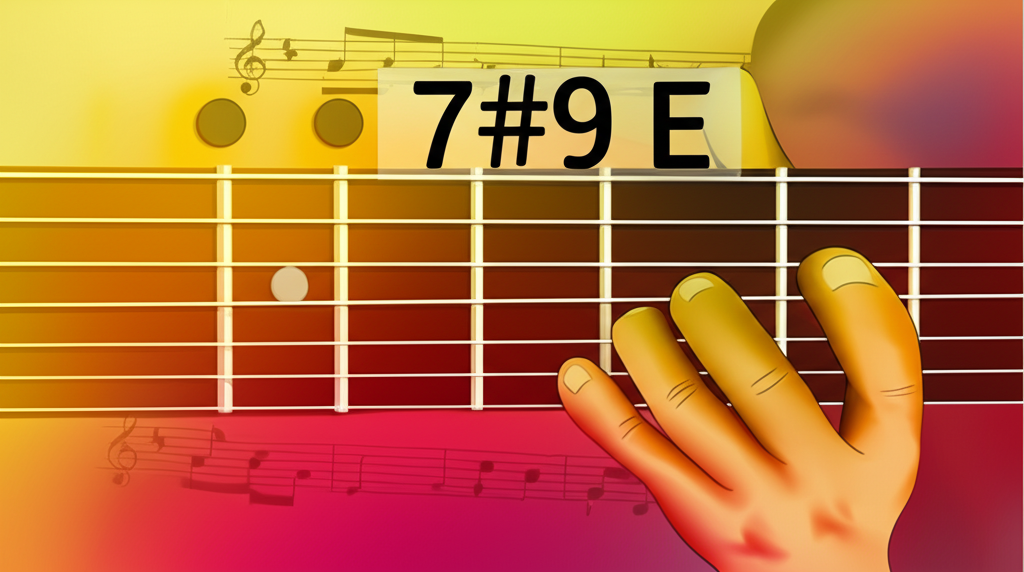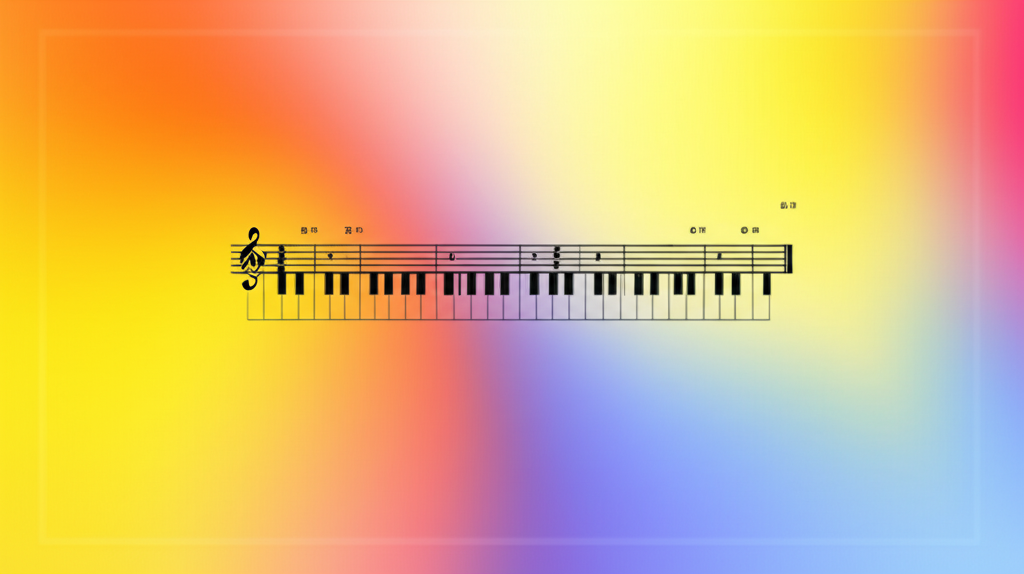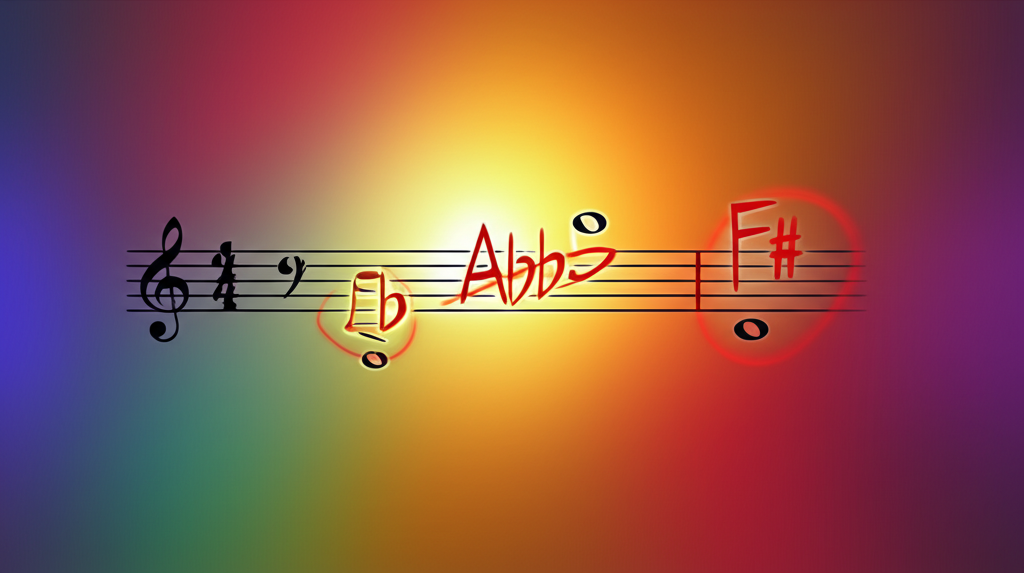Articles tagged with: "interval"

The Major Scale: The Foundation of Western Music
The major scale is the most fundamental scale in Western music. It's a seven-note diatonic scale that forms the basis for countless melodies, harmonies, and musical compositions across all genres....

Major Seventh Chord: The Jazz Standard of Sophistication
The major seventh chord elevates the basic major triad with a rich, colorful extension: the major seventh interval. This creates a sophisticated, dreamy sound that is foundational to jazz, bossa...

Mastering the 7#11 Chord: A Comprehensive Guide to Dominant Seventh Sharp Eleven
The 7#11 chord, also known as the dominant seventh sharp eleven, is a rich and colorful extended chord that adds harmonic tension and sophistication to music. This chord is particularly …

The 6/9 Chord: A Comprehensive Guide for Musicians
The 6/9 chord is a beautiful and versatile extended chord that adds color and richness to music. It is commonly used in jazz, pop, and classical music to create a …

Mastering the Octatonic Scale: Symmetry, Tension, and Modern Harmony
The octatonic scale, also known as the diminished scale, is one of the most fascinating and versatile symmetrical scales in music theory. This eight-note scale alternates between whole and half …

Unveiling the Diminished Octave: A Musician's Guide to Dissonance
The diminished octave is a fascinating and highly dissonant interval that, while rare, serves as a powerful tool for composers to create tension, surprise, and deep emotional color. This article...

Diminished Chord: The Mysterious and Unstable Harmony
The diminished chord, a unique harmony built from a stack of minor thirds, is one of the most tension-filled and unstable sounds in Western music. This guide explores its structure, …
Read more
Major Scales: The Melodic Foundation of Western Music
The major scale is one of the most fundamental pillars of Western music, providing the essential framework for melody, harmony, and composition across centuries. This article explores the structure...

Musical Intervals: The Building Blocks of Music
Musical intervals are the distances in pitch between any two notes, serving as the fundamental element upon which melody, harmony, and scales are constructed. A strong understanding of intervals is...

The Neapolitan Major Scale: A Comprehensive Guide for Musicians
The Neapolitan Major scale is a fascinating and somewhat exotic scale that offers a unique sound palette for composers and improvisers. This scale, also known as the Lydian Dominant scale, …

The Perfect Octave: Music's Foundational Interval
The perfect octave is arguably the most important interval in music. After the unison (two identical notes), it is the most consonant and stable sound, creating a feeling of resolution …

Unlocking the Prometheus Scale: A Comprehensive Guide
The Prometheus Scale, a hexatonic (six-note) scale conceived by Russian composer Alexander Scriabin, is a cornerstone of his mystical and harmonically advanced style. Far from a modern invention with...

The Complete Musician's Guide to the Locrian Mode
The Locrian mode is the seventh and final mode of the major scale, known for its dark, unstable, and tense sound. This mode is unique because it features a diminished …

The Tritone: Understanding the Devil's Interval in Music
A tritone is a musical interval that spans three whole tones, hence the name 'tritone'. It is also known as an augmented fourth (A4) or diminished fifth (d5), depending on …

The Augmented Unison: Understanding Music's Smallest Chromatic Step
This article demystifies the augmented unison, a fundamental interval in music theory. We explore its precise definition, its critical enharmonic relationship with the minor second, and its essential...

The Diminished Second: Unraveling Music Theory's Curious Unison
This article delves into the diminished second, one of the most peculiar intervals in music theory. We will explore why this interval, which sounds identical to a unison in modern …

The Harmonic Minor Scale: A Guide to Its Mystery and Tension
The harmonic minor scale is a crucial variation of the natural minor scale, defined by its raised seventh degree. This single alteration creates a distinctive augmented second interval, giving the...

Mastering the Locrian Mode: The Darkest Scale in Music Theory
The Locrian mode is the seventh and final mode of the major scale, known for its dark, unstable, and dissonant sound. Often considered the "darkest" of the seven modes, it …

Understanding the Major Third: The Building Block of Bright Harmony
This article delves into the major third, a fundamental musical interval that is the key to creating bright, happy-sounding harmony. We define the major third (an interval of four semitones), …

The Hendrix Chord (7#9): A Deep Dive into the Iconic Dominant Seventh Sharp Nine
The Hendrix Chord, formally known as the dominant seventh sharp nine (7#9), is a rich and dissonant chord that has become synonymous with the sound of Jimi Hendrix. It is …

Minor Third Interval: The Heart of Minor Harmony
The minor third interval, a span of three semitones, is the essential building block of minor harmony. It provides the melancholic, introspective, and soulful character that defines minor chords,...

Mastering the Natural Minor Scale: The Complete Beginner's Guide
This article explores mastering the natural minor scale: the complete beginner's guide, covering its fundamental concepts, practical applications, and musical examples.

Perfect Fourth Interval: The Foundation of Musical Stability
The perfect fourth, an interval spanning five semitones, is one of music's most fundamental and versatile building blocks. It is a perfect consonance, possessing a stable and pure sound derived …

The Tritone: Mastering the Devil's Interval in Music
The tritone is one of the most fascinating and controversial intervals in music theory. Spanning three whole tones (hence the name "tritone"), this interval has been called the "devil's interval" …

Mastering the Minor 11th Chord: Theory and Application
The Minor 11th chord is a rich and complex extended chord that adds depth and color to musical compositions. This guide will explore its construction, historical context, and practical applications...

Mastering the Neapolitan Minor Scale: Theory and Practice
This article explores mastering the neapolitan minor scale: theory and practice, covering its fundamental concepts, practical applications, and musical examples.

Unlocking the Augmented Fifth: Your Guide to Musical Tension and Color
This article delves into the augmented fifth, a unique and colorful interval in music theory. We will explore its definition, its distinct, dissonant sound, and its crucial role in creating …

The Minor Third: Music's Melancholy Heartbeat
A fundamental musical interval spanning three semitones, the minor third is the essential building block of minor chords and scales. Its characteristically pensive, sad, or mysterious sound makes it...
Read more
Perfect Unison: The Fundamental Building Block of Music
The perfect unison is the most fundamental interval in music theory. It occurs when two notes of the same pitch are played simultaneously. This interval serves as the building block …

Major Sixth Interval: The Open and Expansive Sound
The major sixth is a powerfully expressive musical interval spanning nine semitones. Known for its open, uplifting, and optimistic sound, it's a cornerstone of melody and harmony in genres from …

Unlocking the Diminished Sixth: A Guide to Its Tense Beauty
Dive into the world of the diminished sixth, a fascinating and highly expressive musical interval. This article demystifies its tense sound, explains its unique theoretical properties (including its...
Read more
A Guide to Dominant Modulation: Changing Keys Like a Pro
Dominant modulation is a cornerstone of Western music, providing a smooth and powerful way to change keys. This article demystifies this essential harmonic tool, exploring what it is, how it …

Unlocking the Augmented Second: The Exotic Interval of Music Theory
This article delves into the augmented second, a unique and colorful interval in music theory. We will explore its definition, its characteristic sound spanning three semitones, and its crucial role...

The Minor Pentatonic Scale: A Comprehensive Guide for Beginners
This article explores the minor pentatonic scale: a comprehensive guide for beginners, covering its fundamental concepts, practical applications, and musical examples.

The Major Pentatonic Scale: A Universal Key to Melody
This article is a comprehensive guide to the major pentatonic scale, a fundamental five-note scale that forms the melodic backbone of music across countless genres and cultures. Discover its simple...

Mastering the Mixolydian Mode: A Complete Guide for Musicians
The Mixolydian mode is one of the seven musical modes derived from the major scale. It is often described as a major scale with a flattened seventh (♭7), giving it …

Decoding the Augmented Seventh: Music Theory's Curious Interval
This article demystifies the augmented seventh, a fascinating and rare musical interval. We will explore its unique characteristic of being enharmonically equivalent to a perfect octave, meaning it...

The Perfect Fifth: Music's Strongest Interval
The perfect fifth is arguably the most important musical interval after the octave. Spanning seven semitones, its pure, stable sound makes it the bedrock of harmony in Western music and …

Major Second Interval: The Foundation of Melodic Movement
The major second, also known as a whole step, is the foundational interval for melodic motion in Western music. Spanning two semitones, it forms the basis of scales, creates smooth …

Mastering the Perfect Eleventh: A Complete Music Theory Guide
A Perfect Eleventh is a compound interval spanning an octave plus a perfect fourth. In simpler terms, it's the distance from a root note to the note eleven scale degrees …
Perfect Unison Explained: The Fundamental Interval Every Musician Should Master
This article explores perfect unison explained: the fundamental interval every musician should master, covering its fundamental concepts, practical applications, and musical examples.

Minor Ninth Interval: Expanding Beyond the Octave
The minor ninth interval is a compound interval spanning thirteen semitones, equivalent to an octave plus a minor second. This interval creates a distinctive sound that is both dissonant and...

Major Ninth Interval: Bright Extensions in Modern Harmony
The major ninth interval is a compound interval spanning fourteen semitones, equivalent to an octave plus a major second. This bright, open-sounding interval is a cornerstone of modern harmony,...

Mastering the Minor Thirteenth: A Complete Guide to This Expressive Interval
A minor thirteenth is a compound interval that spans a minor thirteenth above a root note. It consists of a minor tenth (an octave plus a minor third) plus a …

Minor Sixth Interval: The Melancholic Beauty
In the rich tapestry of musical intervals, the minor sixth holds a special place. It possesses a powerful emotional duality: a sound of profound sadness and longing, yet one that …

The Perfect Octave: A Fundamental Interval in Music
The perfect octave is one of the most fundamental intervals in music theory. It is the distance between two notes where the higher note has exactly double the frequency of …

Understanding the Major Thirteenth Interval
The major thirteenth is a compound interval that adds a sophisticated, airy, and often dreamy quality to music. Extending beyond a single octave, it is a cornerstone of advanced harmony, …

The Perfect Fourth: Music's Enduring Enigma
The perfect fourth is a foundational musical interval spanning five semitones. It has a uniquely dualistic nature: it can sound open and stable as a melodic leap, yet tense and …

Perfect Fifth Interval: The Pillar of Musical Harmony
The perfect fifth interval, spanning seven semitones, is arguably the most important harmonic interval in Western music after the octave. Its pure, stable sound comes from a simple acoustic ratio...

Secondary Dominants: Adding Color and Direction to Chord Progressions
Secondary dominants are one of the most powerful tools in functional harmony, used to add color, tension, and forward momentum to chord progressions. By temporarily "tonicizing" chords other than the...
Mastering the Minor Thirteenth: The Complete Guide to This Colorful Interval
The minor thirteenth is a compound interval that spans 20 semitones above the root note, combining an octave plus a minor sixth. In chord construction, it typically appears as an …

Unlocking the Augmented Third: A Rare and Expressive Interval
Dive into the augmented third, a rare but powerful interval in music theory. This article demystifies its structure, its enharmonic relationship with the perfect fourth, and its crucial role in...
Read more